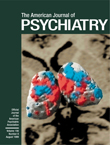Since its first volume appeared in 1945, founded by Anna Freud, Ernst Kris, and Heinz Hartmann, the annual volume of The Psychoanalytic Study of the Child has remained a leading presenter of work and thought in psychoanalysis, child psychiatry, child development, and related fields. The present managing editor, Albert Solnit, with the assistance of Peter Neubauer, Samuel Abrams, A. Scott Dowling, and others, has continued a distinguished tradition of carefully selected, edited, and peer-reviewed excellence.
As some psychiatrists will have noticed, over the past 50 years the world has changed. Biological psychiatry has recently overshadowed psychoanalytic and social psychiatry. Psychoanalysis has become far less dominant in scientific thought, in child development, and in psychiatry. Over time, the contents of the annual volumes of The Psychoanalytic Study of the Child have somewhat embodied and adapted to these changes. In fact, it is one of the few annuals or journals whose every volume over the past half century contains articles that are still widely read, and very much worth reading.
Like psychoanalysis itself, The Psychoanalytic Study of the Child is probably less well-known and less widely discussed than it was a few decades ago. Some would say that psychoanalysis, and perhaps The Psychoanalytic Study of the Child, has too long gone along as a cloistered world, creative and fanciful, often deep, often subtle, and sometimes brilliant—but sometimes flatly wrong, often unintegrated with other relevant data and thought, and usually unprovable: a part-science world. Some might even call The Psychoanalytic Study of the Child a bit faded or peripheral and obsolete, or even stagnant and beside the point, in an era of biological psychiatry, genetics, epidemiology, questionnaire studies, DSM-IV, and managed care.
I am not among these severe critics. Although I do not find every article in The Psychoanalytic Study of the Child lively and compelling (who finds everything in any good journal lively and compelling?), I am glad the editors are both holding on and forging ahead; and I think a continuing and vigorous The Psychoanalytic Study of the Child is healthy and helpful for good biopsychosocial psychiatry. To me and, I think, many other readers, the present volume demonstrates the relevance, depth, and even fascination of many aspects of psychoanalytic clinical work and thought to many issues of human development, biopsychosocial psychiatry, psychology, and brain biology, as well as anthropology, sociology, history, and art.
The book is divided into five sections: Psychoanalytic Theory, Development, Clinical Contributions, Applied Psychoanalysis, and Historical Perspectives. Under Psychoanalytic Theory, we find Rosemary Balsam on “Active Neutrality and Loewald’s Metaphor of Theater”; Joseph Fernando on “The Exceptions: Structural and Dynamic Aspects,” which deals with character types and the attitude of justified rebellion; Thomas Freeman on “Mental Economics and Psychoanalytic Theories of Psychotic Phenomena” (a welcome if not fully persuasive look at psychosis); and Evelyne Albrecht Schwaber on the patient’s psychic reality, as contrasted with other realities.
Under Development, there is a good essay on many uses of play, by Marian Birch; a thoughtful paper by Pietro Castenuovo-Tedesco on “The Psychological Consequences of Physical Illness or Defect and Their Relationship to the Concept of Deficit”; a discussion of kidnapping fantasies by Laurie S.M. Hollman; a study by Ruth F. Lax of a boy’s envy of his mother as narcissistic mortification; and an ambitious but to my mind almost caricature thesis that rhythms of infancy shape aesthetic pleasure.
The Clinical Contributions section begins with what seems to me a troubling and not uncommon situation of a talented child clinician selectively pushing inadequate mid-twentieth-century ideas and clichés about pre-homosexuality and homosexuality onto a child and family; a useful paper on “Technical Issues in Adolescent Analysis,” by Claudia Lament, who rather boldly and successfully uses a 55-year-old Henry James protagonist as a parallel to adolescent unsureness and growth; a paper on “Anniversary Reactions in a Five-Year-Old Boy”; and a paper on father loss and “father hunger” in an adolescent boy.
Under Applied Psychoanalysis, there is a paper by Yecheskiel Cohen on attachment and psychopathological development; a multiply illustrated paper, by Margaret R. Karp, on “Symbolic Participation: The Role of Projective Drawings in a Case of Child Abuse”; a speculative paper, also illustrated, on Cubism and Freud, by Nancy Olson; a brief and tidy paper on Huston’s and Joyce’s “The Dead,” by Paul Schwaber; and a discussion by Inge Seiffge-Krenke of boundaries between chronically ill adolescents and their mothers.
Under Historical Perspectives, we find a useful summary of some prominent models of residential care (Anna Freud, Aichhorn, Bettelheim, Redl, and Wineman), by Bertram Cohler and Patrick Zimmerman; and an interview by Peter L. Rudnytsky with Mary Ainsworth on the origins of attachment theory, which contains useful summary nuggets.
I recommend this volume to all thoughtful biopsychosocial colleagues: it is a good and useful volume in a properly tenacious tradition.

